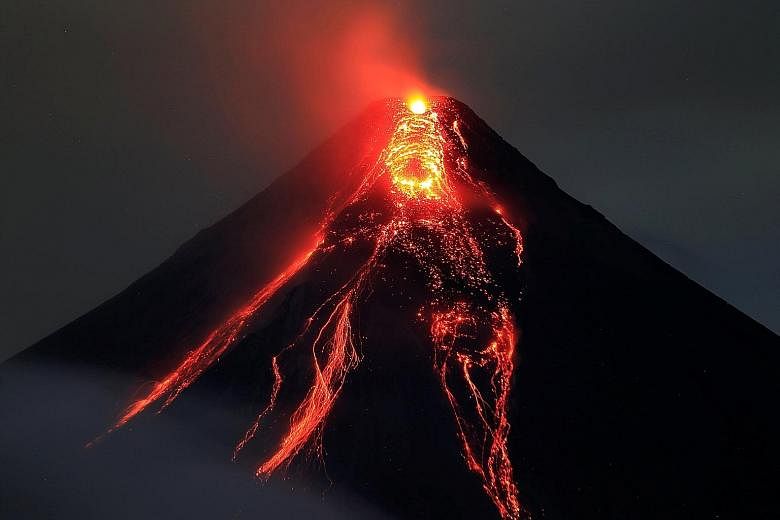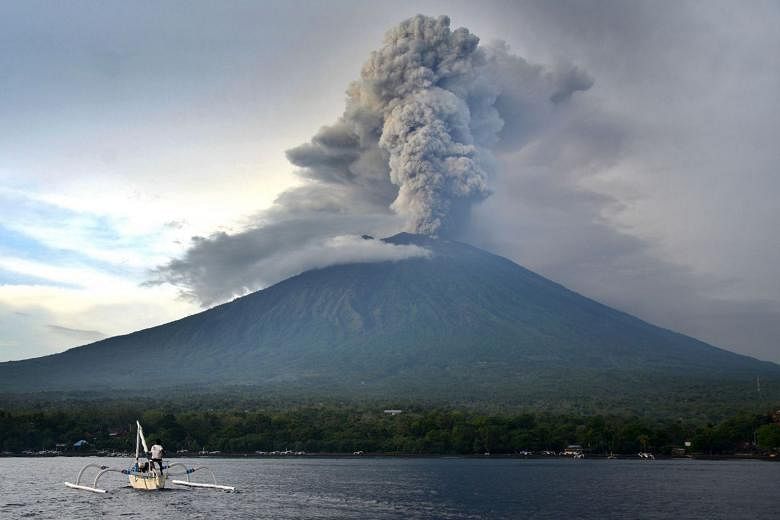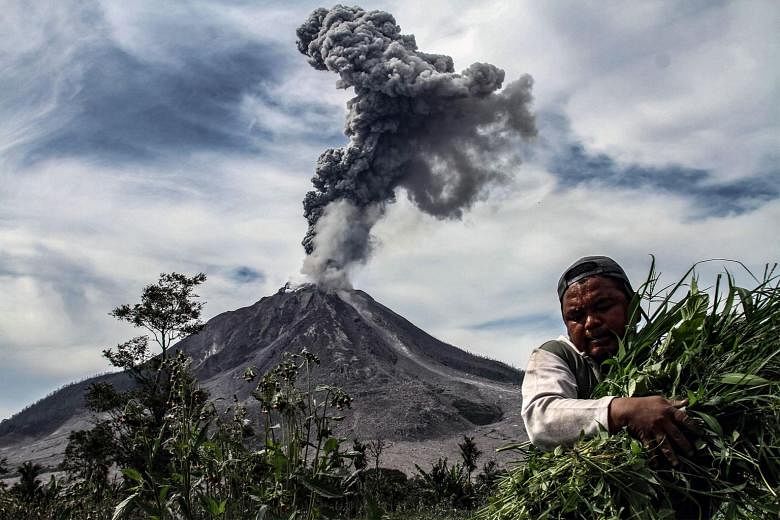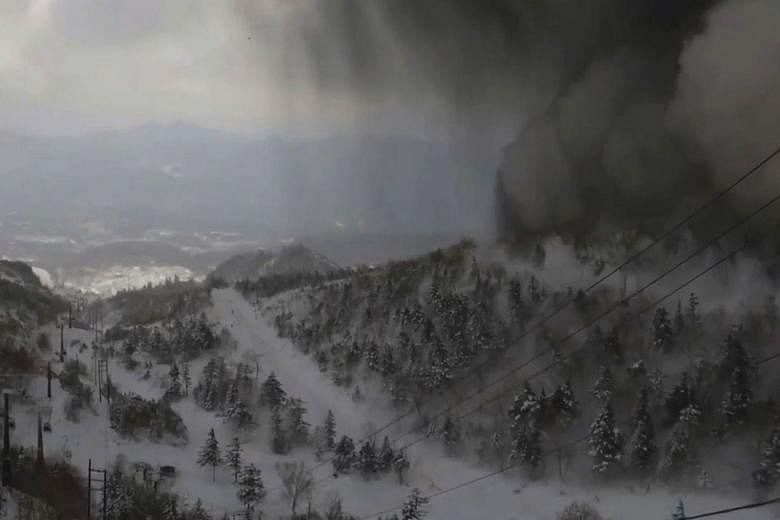MANILA • From cranky volcanoes belching lava and ash to big quakes rattling cities and triggering tsunami alerts. The earth seems pretty angry right now.
Take for instance the eruptions of Mount Agung and Mount Sinabung in Indonesia, another in Papua New Guinea, the ongoing eruption of Mount Mayon in the Philippines and last week's sudden eruption of a Japanese volcano near Tokyo. Also last week, there was 6.1 magnitude tremor near Jakarta and 7.9 magnitude quake off Alaska.
What's going on? Are they all linked and are even deadlier events on the way?
Experts say there's nothing to worry about and that the level of activity is normal.
All the events have occurred along the Pacific Ring of Fire, the world's most seismically active zone. The Ring is a 40,000km arc that stretches from New Zealand, to Papua New Guinea, Indonesia, the Philippines and Japan, across to Alaska, the United States, Mexico to the southern tip of South America.
Along the Ring of Fire, a number of major tectonic plate boundaries collide. It is an interconnected series of fault lines that are constantly under pressure from super-hot molten rock beneath.
Occasionally the fissures give in and explode, creating volcanic eruptions and causing the land on either side of the fault line to shift and buckle violently, triggering earthquakes.
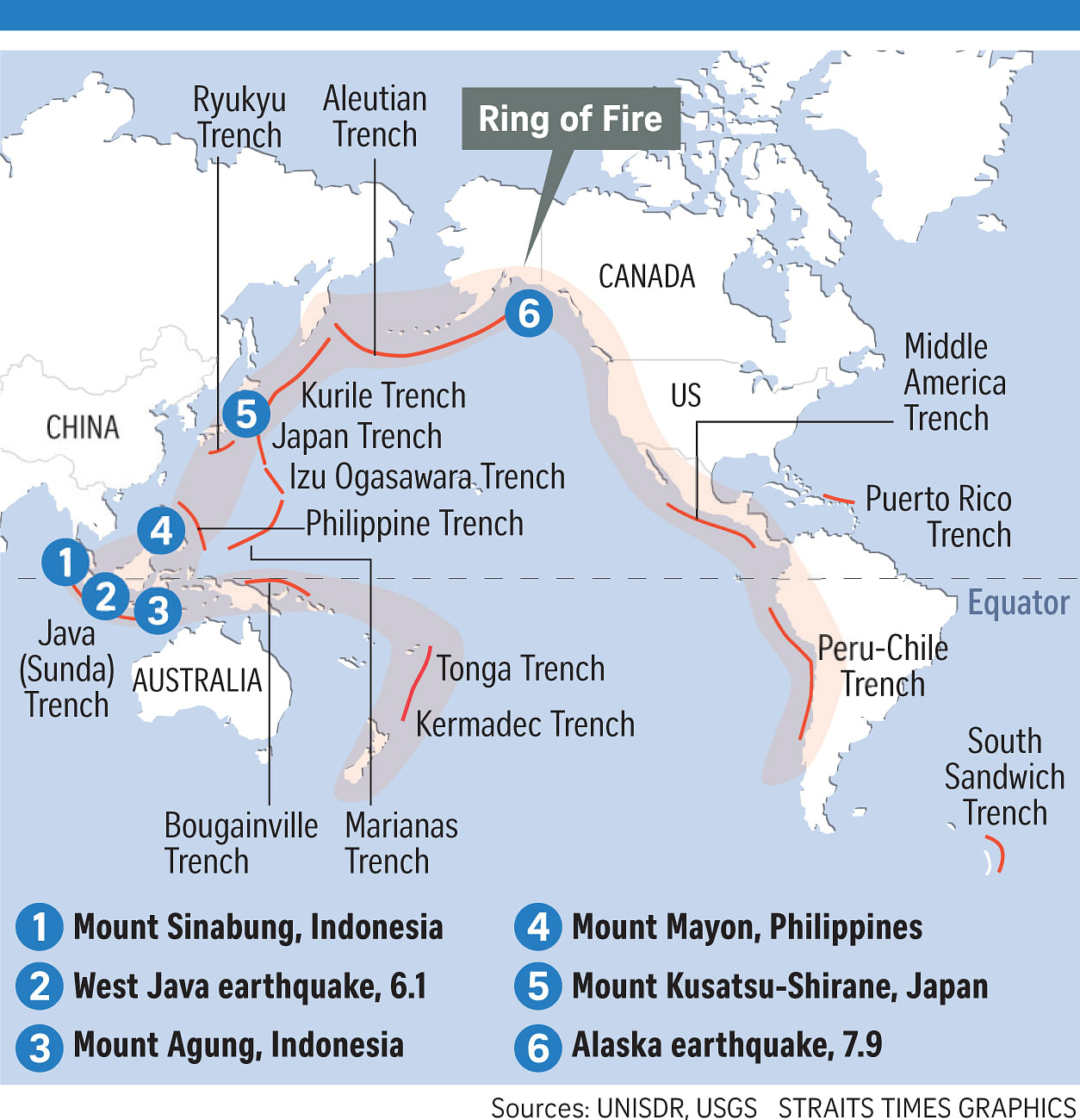
"It is not surprising, nor alarming, to have multiple earthquakes and eruptions occurring within this region in a short period of time," Dr Benoit Taisne, principal investigator of the Earth Observatory of Singapore, told The Straits Times.
The United States Geological Survey says about 90 per cent of the world's earthquakes occur along the Ring of Fire. The next most seismic region, with about 5 to 6 per cent of all quakes, is the Alpide belt, which extends from the Mediterranean region, eastward through Turkey, Iran, and northern India.
The US agency says more than half of the world's active volcanoes above sea level encircle the Pacific Ocean to form the Ring of Fire. It is by nature a pretty active part of the world and earthquakes of various intensities occur daily.
The recent string of quakes and eruptions, though, have sparked talk of an uptick in activity, with the United Nation's Office for Disaster Risk Reduction tweeting last week that the Ring of Fire was "active".
"The Pacific rim is in a period of activity," said Professor Toshiyasu Nagao, head of Tokai University's Earthquake Prediction Research Centre in Japan.
"In terms of volcanic history, however, the current activity is still regarded as normal," he told Agence France-Presse.
Other experts agreed.
"It's not referred to as the 'ring of fire' because it sits there doing nothing... It is normal to have so much activity," tweeted volcanologist Janine Krippner.
The recent spectacular eruptions and earthquakes have caused some speculation about a potential "domino effect", but experts say that simply isn't how the Ring of Fire works.
"Volcanic activity at each volcano is not correlated," Dr Yosuki Aoki, assistant professor of physical volcanology at the University of Tokyo, told AFP. He said volcanoes "cycle through active and inactive periods, and this is part of it".
"I don't think something abnormal is taking place."
Prof Chris Elders, a geology expert from Curtin University in Australia, agreed, telling the BBC the recent activity is entirely normal.
"It just so happens that these events are occurring at the same time in different parts of the region. There's not necessarily a relationship between them," he said.
